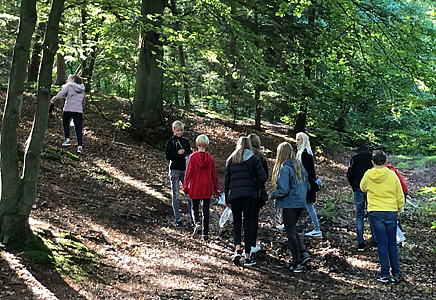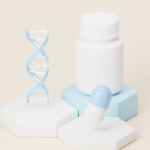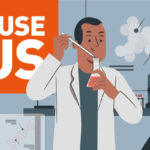Schoolchildren’s bacteria hunt results in the discovery of 10 new species Go back »
2019-02-07 | All chapters

The Mass Experiment
It’s clear from the name alone that ‘The Mass Experiment’, organized by Astra, the Danish national center for education in natural sciences, had big ambitions of engaging a generation of schoolchildren in science. That was certainly the case, when around 25,000 Danish school children ventured into nature last autumn to hunt for good bacteria.
Leading these 25,000 children through woods, school yards and parks to gather samples, the hunt engaged them in natural sciences through hands-on experiences. The schoolchildren-turned-scientists tested and analyzed their findings before sending them to Novozymes for screening and characterization.
Examining the haul
Over a three-month period, a team of 70 lab assistants and researchers at Novozymes analyzed 11,142 samples that the schoolchildren had tested positive for lactobacillus bacteria. The bacteria were then cultured and sequenced to identify their DNA. In all, 4,000 separate bacterial strains were identified, of which ten were new species, never before discovered.
“The hope was to find at least one new species of bacteria,” says Mads Bjørnvad, Department Manager at Novozymes. “The finding of ten new species exceeds all our expectations. The result is mainly due to the systematic and thorough collection of samples by many school pupils.
“This is the first time that we have had the opportunity to work with such a large number of unique samples, collected with such a geographical spread,” continued Mads. “In short, we have made the most comprehensive snapshot of Denmark’s naturally-occurring lactic acid bacteria ever.”
Let the naming begin
And if these fantastic results alone haven’t captured the imagination of thousands of future scientists, then the excitement doesn’t stop here. After the ten newly-identified bacterial species are characterized further and the data published in scientific journals, they will require names. As is customary in the scientific community, the schoolchildren responsible for the successful finds will be consulted for their input into this important task. Bacteria is commonly named after where it was found, or by whom.
Together, Novozymes and schools participated in the world’s largest hunt for good bacteria. The newly discovered species will be researched further and could potentially be used as dietary supplements to prevent diseases or for food production. This should be a great source of pride for 25,000 schoolchildren, perhaps future scientists.
The results have been published on a map of Denmark, showing where to find the various species of lactobacillus bacteria. The findings of the ten new bacterial species are publicly available to everyone with an interest and passion for biology.
Source: Novozymes


